-
EXECUTIVE SUMMARY 15
-
MARKET ATTRACTIVENESS ANALYSIS 16
- GLOBAL FOOD SAFETY TESTING MARKET, BY CONTAMINANT 17
- GLOBAL FOOD SAFETY TESTING MARKET, BY TECHNOLOGY 18
- GLOBAL FOOD SAFETY TESTING MARKET, BY FOOD TYPE 19
- GLOBAL FOOD SAFETY TESTING MARKET, BY REGION 20
-
MARKET INTRODUCTION 21
-
DEFINITION 21
-
SCOPE OF THE STUDY 21
-
RESEARCH OBJECTIVE 21
-
MARKET STRUCTURE 22
-
KEY BUYING CRITERIA 22
-
RESEARCH METHODOLOGY 23
-
RESEARCH PROCESS 23
-
PRIMARY RESEARCH 24
-
SECONDARY RESEARCH 25
-
MARKET SIZE ESTIMATION 25
-
FORECAST MODEL 27
-
LIST OF ASSUMPTIONS 28
-
MARKET INSIGHTS 29
-
MARKET DYNAMICS 31
-
INTRODUCTION 31
-
DRIVERS 31
- INCREASED OUTBREAK OF FOOD-BORNE ILLNESSES WORLDWIDE 31
- STRINGENT FOOD SAFETY REGULATIONS 32
- DRIVERS IMPACT ANALYSIS 33
-
RESTRAINTS 33
- LIMITED SUPPORTING INFRASTRUCTURE IN DEVELOPING COUNTRIES 33
- RESTRAINTS IMPACT ANALYSIS 34
-
OPPORTUNITIES 34
- ADVANCES IN RAPID TECHNOLOGY 34
-
MARKET FACTOR ANALYSIS 35
-
SUPPLY CHAIN ANALYSIS 35
- RAW MATERIAL 35
- TESTING 36
- RESULT 36
-
PORTER’S FIVE FORCES MODEL 36
- THREAT OF NEW ENTRANTS 37
- BARGAINING POWER OF SUPPLIERS 37
- BARGAINING POWER OF BUYERS 37
- THREAT OF SUBSTITUTES 37
- INTENSITY OF RIVALRY 37
-
GLOBAL FOOD SAFETY TESTING MARKET, BY CONTAMINANT 38
-
OVERVIEW 38
- GLOBAL FOOD SAFETY TESTING MARKET ESTIMATES & FORECAST, BY CONTAMINANT, 2023-2030 39
-
PATHOGENS 39
- PATHOGENS: MARKET ESTIMATES & FORECAST, BY REGION, 2023-2030 40
-
PESTICIDES 40
- PESTICIDES: MARKET ESTIMATES & FORECAST, BY REGION, 2023-2030 40
-
TOXINS 41
- TOXINS: MARKET ESTIMATES & FORECAST, BY REGION, 2023-2030 41
-
GMOS 41
- GMOS: MARKET ESTIMATES & FORECAST, BY REGION, 2023-2030 42
-
OTHERS 42
- OTHERS: MARKET ESTIMATES & FORECAST, BY REGION, 2023-2030 42
-
GLOBAL FOOD SAFETY TESTING MARKET, BY TECHNOLOGY 43
-
OVERVIEW 43
- GLOBAL FOOD SAFETY TESTING MARKET ESTIMATES & FORECAST, BY TECHNOLOGY, 2023-2030 44
-
TRADITIONAL 44
- TRADITIONAL: MARKET ESTIMATES & FORECAST, BY REGION, 2023-2030 45
-
RAPID 45
- RAPID: MARKET ESTIMATES & FORECAST, BY REGION, 2023-2030 46
-
GLOBAL FOOD SAFETY TESTING MARKET, BY FOOD TYPE 47
-
OVERVIEW 47
- GLOBAL FOOD SAFETY TESTING MARKET ESTIMATES & FORECAST, BY FOOD TYPE, 2023-2030 48
-
MEAT, POULTRY, & SEAFOOD PRODUCTS 48
- MEAT, POULTRY, & SEAFOOD PRODUCTS: MARKET ESTIMATES & FORECAST, BY REGION, 2023-2030 49
-
DAIRY PRODUCTS 49
- DAIRY PRODUCTS: MARKET ESTIMATES & FORECAST, BY REGION, 2023-2030 49
-
CEREALS & GRAINS 50
- CEREALS & GRAINS: MARKET ESTIMATES & FORECAST, BY REGION, 2023-2030 50
-
PROCESSED FOOD 50
- PROCESSED FOOD: MARKET ESTIMATES & FORECAST, BY REGION, 2023-2030 51
-
FRUITS & VEGETABLES 51
- FRUITS & VEGETABLES: MARKET ESTIMATES & FORECAST, BY REGION, 2023-2030 51
-
OTHERS 52
- OTHERS: MARKET ESTIMATES & FORECAST, BY REGION, 2023-2030 52
-
GLOBAL FOOD SAFETY TESTING MARKET, BY REGION 53
-
OVERVIEW 53
-
NORTH AMERICA 55
- US 58
- CANADA 60
- MEXICO 62
-
EUROPE 64
- GERMANY 67
- UK 69
- FRANCE 71
- SPAIN 73
- ITALY 75
- REST OF EUROPE 77
-
ASIA-PACIFIC 79
- CHINA 82
- JAPAN 84
- INDIA 86
- AUSTRALIA & NEW ZEALAND 88
- REST OF ASIA-PACIFIC 90
-
REST OF THE WORLD 92
- SOUTH AMERICA 95
- MIDDLE EAST 97
- AFRICA 99
-
COMPETITIVE LANDSCAPE 101
-
INTRODUCTION 101
- MARKET STRATEGY ANALYSIS 101
-
COMPETITIVE BENCHMARKING 102
-
KEY DEVELOPMENTS & GROWTH STRATEGIES 103
- PRODUCT/SERVICE LAUNCHES 103
- MERGERS & ACQUISITIONS 103
- EXPANSIONS 105
- JOINT VENTURES 105
- PARTNERSHIPS 105
-
COMPANY PROFILES 106
-
SGS SA 106
- COMPANY OVERVIEW 106
- FINANCIAL OVERVIEW 106
- PRODUCTS OFFERED 107
- KEY DEVELOPMENTS 107
- SWOT ANALYSIS 108
- KEY STRATEGIES 108
-
MICROBAC LABORATORIES, INC. 109
- COMPANY OVERVIEW 109
- FINANCIAL OVERVIEW 109
- PRODUCTS OFFERED 109
- KEY DEVELOPMENTS 109
- KEY STRATEGIES 109
-
EUROFINS SCIENTIFIC 110
- COMPANY OVERVIEW 110
- FINANCIAL OVERVIEW 110
- PRODUCTS OFFERED 111
- KEY DEVELOPMENTS 111
- SWOT ANALYSIS 113
- KEY STRATEGIES 113
-
BUREAU VERITAS 114
- COMPANY OVERVIEW 114
- FINANCIAL OVERVIEW 114
- PRODUCTS OFFERED 115
- KEY DEVELOPMENTS 115
- SWOT ANALYSIS 116
- KEY STRATEGIES 116
-
INTERTEK GROUP PLC 117
- COMPANY OVERVIEW 117
- FINANCIAL OVERVIEW 117
- PRODUCTS OFFERED 118
- KEY DEVELOPMENTS 118
- SWOT ANALYSIS 119
- KEY STRATEGIES 119
-
ALS LIMITED 120
- COMPANY OVERVIEW 120
- FINANCIAL OVERVIEW 120
- PRODUCTS OFFERED 121
- KEY DEVELOPMENTS 121
- SWOT ANALYSIS 122
- KEY STRATEGIES 122
-
ASUREQUALITY LTD. 123
- COMPANY OVERVIEW 123
- FINANCIAL OVERVIEW 123
- PRODUCTS OFFERED 124
- KEY DEVELOPMENTS 124
- KEY STRATEGIES 124
-
NEOGEN CORPORATION 125
- COMPANY OVERVIEW 125
- FINANCIAL OVERVIEW 125
- PRODUCTS OFFERED 126
- KEY DEVELOPMENTS 126
- KEY STRATEGIES 126
-
TÜV SÜD 127
- COMPANY OVERVIEW 127
- FINANCIAL OVERVIEW 127
- PRODUCTS OFFERED 128
- KEY DEVELOPMENTS 128
- KEY STRATEGIES 128
-
ADPEN LABORATORIES INC. 129
- COMPANY OVERVIEW 129
- FINANCIAL OVERVIEW 129
- PRODUCTS OFFERED 129
- KEY DEVELOPMENTS 129
- KEY STRATEGIES 129
-
REFERENCES 130
-
-
LIST OF TABLES
-
PRIMARY INTERVIEWS 24
-
LIST OF ASSUMPTIONS 28
-
GLOBAL FOOD SAFETY TESTING MARKET ESTIMATES & FORECAST, BY CONTAMINANT, 2023-2030 (USD MILLION) 39
-
PATHOGENS: MARKET ESTIMATES & FORECAST, BY REGION, 2023-2030 (USD MILLION) 40
-
PESTICIDES: MARKET ESTIMATES & FORECAST, BY REGION, 2023-2030 (USD MILLION) 40
-
TOXINS: MARKET ESTIMATES & FORECAST, BY REGION, 2023-2030 (USD MILLION) 41
-
GMOS: MARKET ESTIMATES & FORECAST, BY REGION, 2023-2030 (USD MILLION) 42
-
OTHERS: MARKET ESTIMATES & FORECAST, BY REGION, 2023-2030 (USD MILLION) 42
-
GLOBAL FOOD SAFETY TESTING MARKET ESTIMATES & FORECAST, BY TECHNOLOGY, 2023-2030 (USD MILLION) 44
-
TRADITIONAL: MARKET ESTIMATES & FORECAST, BY REGION, 2023-2030 (USD MILLION) 45
-
RAPID: MARKET ESTIMATES & FORECAST, BY REGION, 2023-2030 (USD MILLION) 46
-
GLOBAL FOOD SAFETY TESTING MARKET ESTIMATES & FORECAST, BY FOOD TYPE, 2023-2030 (USD MILLION) 48
-
MEAT, POULTRY, & SEAFOOD PRODUCTS: MARKET ESTIMATES & FORECAST, BY REGION, 2023-2030 (USD MILLION) 49
-
DAIRY PRODUCTS: MARKET ESTIMATES & FORECAST, BY REGION, 2023-2030 (USD MILLION) 49
-
CEREALS & GRAINS: MARKET ESTIMATES & FORECAST, BY REGION, 2023-2030 (USD MILLION) 50
-
PROCESSED FOOD: MARKET ESTIMATES & FORECAST, BY REGION, 2023-2030 (USD MILLION) 51
-
FRUITS & VEGETABLES: MARKET ESTIMATES & FORECAST, BY REGION, 2023-2030 (USD MILLION) 51
-
OTHERS: MARKET ESTIMATES & FORECAST, BY REGION, 2023-2030 (USD MILLION) 52
-
GLOBAL FOOD SAFETY TESTING MARKET ESTIMATES & FORECAST, BY REGION, 2023-2030 (USD MILLION) 54
-
NORTH AMERICA: MARKET ESTIMATES & FORECAST, BY COUNTRY, 2023-2030 (USD MILLION) 55
-
NORTH AMERICA: FOOD SAFETY TESTING MARKET, BY CONTAMINANT, 2023-2030 (USD MILLION) 56
-
NORTH AMERICA: FOOD SAFETY TESTING MARKET, BY TECHNOLOGY, 2023-2030 (USD MILLION) 57
-
NORTH AMERICA: FOOD SAFETY TESTING MARKET, BY FOOD TYPE, 2023-2030 (USD MILLION) 57
-
US: FOOD SAFETY TESTING MARKET, BY CONTAMINANT, 2023-2030 (USD MILLION) 58
-
US: FOOD SAFETY TESTING MARKET, BY TECHNOLOGY, 2023-2030 (USD MILLION) 58
-
US: FOOD SAFETY TESTING MARKET, BY FOOD TYPE, 2023-2030 (USD MILLION) 59
-
CANADA: FOOD SAFETY TESTING MARKET, BY CONTAMINANT, 2023-2030 (USD MILLION) 60
-
CANADA: FOOD SAFETY TESTING MARKET, BY TECHNOLOGY, 2023-2030 (USD MILLION) 60
-
CANADA: FOOD SAFETY TESTING MARKET, BY FOOD TYPE, 2023-2030 (USD MILLION) 61
-
MEXICO: FOOD SAFETY TESTING MARKET, BY CONTAMINANT, 2023-2030 (USD MILLION) 62
-
MEXICO: FOOD SAFETY TESTING MARKET, BY TECHNOLOGY, 2023-2030 (USD MILLION) 63
-
MEXICO: FOOD SAFETY TESTING MARKET, BY FOOD TYPE, 2023-2030 (USD MILLION) 63
-
EUROPE: MARKET ESTIMATES & FORECAST, BY COUNTRY, 2023-2030 (USD MILLION) 64
-
EUROPE: FOOD SAFETY TESTING MARKET, BY CONTAMINANT, 2023-2030 (USD MILLION) 65
-
EUROPE: FOOD SAFETY TESTING MARKET, BY TECHNOLOGY, 2023-2030 (USD MILLION) 65
-
EUROPE: FOOD SAFETY TESTING MARKET, BY FOOD TYPE, 2023-2030 (USD MILLION) 66
-
GERMANY: FOOD SAFETY TESTING MARKET, BY CONTAMINANT, 2023-2030 (USD MILLION) 67
-
GERMANY: FOOD SAFETY TESTING MARKET, BY TECHNOLOGY, 2023-2030 (USD MILLION) 67
-
GERMANY: FOOD SAFETY TESTING MARKET, BY FOOD TYPE, 2023-2030 (USD MILLION) 68
-
UK: FOOD SAFETY TESTING MARKET, BY CONTAMINANT, 2023-2030 (USD MILLION) 69
-
UK: FOOD SAFETY TESTING MARKET, BY TECHNOLOGY, 2023-2030 (USD MILLION) 69
-
UK: FOOD SAFETY TESTING MARKET, BY FOOD TYPE, 2023-2030 (USD MILLION) 70
-
FRANCE: FOOD SAFETY TESTING MARKET, BY CONTAMINANT, 2023-2030 (USD MILLION) 71
-
FRANCE: FOOD SAFETY TESTING MARKET, BY TECHNOLOGY, 2023-2030 (USD MILLION) 71
-
FRANCE: FOOD SAFETY TESTING MARKET, BY FOOD TYPE, 2023-2030 (USD MILLION) 72
-
SPAIN: FOOD SAFETY TESTING MARKET, BY CONTAMINANT, 2023-2030 (USD MILLION) 73
-
SPAIN: FOOD SAFETY TESTING MARKET, BY TECHNOLOGY, 2023-2030 (USD MILLION) 73
-
SPAIN: FOOD SAFETY TESTING MARKET, BY FOOD TYPE, 2023-2030 (USD MILLION) 74
-
ITALY: FOOD SAFETY TESTING MARKET, BY CONTAMINANT, 2023-2030 (USD MILLION) 75
-
ITALY: FOOD SAFETY TESTING MARKET, BY TECHNOLOGY, 2023-2030 (USD MILLION) 76
-
ITALY: FOOD SAFETY TESTING MARKET, BY FOOD TYPE, 2023-2030 (USD MILLION) 76
-
REST OF EUROPE: FOOD SAFETY TESTING MARKET, BY CONTAMINANT, 2023-2030 (USD MILLION) 77
-
REST OF EUROPE: FOOD SAFETY TESTING MARKET, BY TECHNOLOGY, 2023-2030 (USD MILLION) 77
-
REST OF EUROPE: FOOD SAFETY TESTING MARKET, BY FOOD TYPE, 2023-2030 (USD MILLION) 78
-
ASIA-PACIFIC: MARKET ESTIMATES & FORECAST, BY COUNTRY, 2023-2030 (USD MILLION) 80
-
ASIA-PACIFIC: FOOD SAFETY TESTING MARKET, BY CONTAMINANT, 2023-2030 (USD MILLION) 80
-
ASIA-PACIFIC: FOOD SAFETY TESTING MARKET, BY TECHNOLOGY, 2023-2030 (USD MILLION) 81
-
ASIA-PACIFIC: FOOD SAFETY TESTING MARKET, BY FOOD TYPE, 2023-2030 (USD MILLION) 81
-
CHINA: FOOD SAFETY TESTING MARKET, BY CONTAMINANT, 2023-2030 (USD MILLION) 82
-
CHINA: FOOD SAFETY TESTING MARKET, BY TECHNOLOGY, 2023-2030 (USD MILLION) 82
-
CHINA: FOOD SAFETY TESTING MARKET, BY FOOD TYPE, 2023-2030 (USD MILLION) 83
-
JAPAN: FOOD SAFETY TESTING MARKET, BY CONTAMINANT, 2023-2030 (USD MILLION) 84
-
JAPAN: FOOD SAFETY TESTING MARKET, BY TECHNOLOGY, 2023-2030 (USD MILLION) 84
-
JAPAN: FOOD SAFETY TESTING MARKET, BY FOOD TYPE, 2023-2030 (USD MILLION) 85
-
INDIA: FOOD SAFETY TESTING MARKET, BY CONTAMINANT, 2023-2030 (USD MILLION) 86
-
INDIA: FOOD SAFETY TESTING MARKET, BY TECHNOLOGY, 2023-2030 (USD MILLION) 87
-
INDIA: FOOD SAFETY TESTING MARKET, BY FOOD TYPE, 2023-2030 (USD MILLION) 87
-
AUSTRALIA & NEW ZEALAND: FOOD SAFETY TESTING MARKET, BY CONTAMINANT, 2023-2030 (USD MILLION) 88
-
AUSTRALIA & NEW ZEALAND: FOOD SAFETY TESTING MARKET, BY TECHNOLOGY, 2023-2030 (USD MILLION) 88
-
AUSTRALIA & NEW ZEALAND: FOOD SAFETY TESTING MARKET, BY FOOD TYPE, 2023-2030 (USD MILLION) 89
-
REST OF ASIA-PACIFIC: FOOD SAFETY TESTING MARKET, BY CONTAMINANT, 2023-2030 (USD MILLION) 90
-
REST OF ASIA-PACIFIC: FOOD SAFETY TESTING MARKET, BY TECHNOLOGY, 2023-2030 (USD MILLION) 90
-
REST OF ASIA-PACIFIC: FOOD SAFETY TESTING MARKET, BY FOOD TYPE, 2023-2030 (USD MILLION) 91
-
REST OF THE WORLD: MARKET ESTIMATES & FORECAST, BY REGION, 2023-2030 (USD MILLION) 92
-
REST OF THE WORLD: FOOD SAFETY TESTING MARKET, BY CONTAMINANT, 2023-2030 (USD MILLION) 93
-
REST OF THE WORLD: FOOD SAFETY TESTING MARKET, BY TECHNOLOGY, 2023-2030 (USD MILLION) 94
-
REST OF THE WORLD: FOOD SAFETY TESTING MARKET, BY FOOD TYPE, 2023-2030 (USD MILLION) 94
-
SOUTH AMERICA: FOOD SAFETY TESTING MARKET, BY CONTAMINANT, 2023-2030 (USD MILLION) 95
-
SOUTH AMERICA: FOOD SAFETY TESTING MARKET, BY TECHNOLOGY, 2023-2030 (USD MILLION) 95
-
SOUTH AMERICA: FOOD SAFETY TESTING MARKET, BY FOOD TYPE, 2023-2030 (USD MILLION) 96
-
MIDDLE EAST: FOOD SAFETY TESTING MARKET, BY CONTAMINANT, 2023-2030 (USD MILLION) 97
-
MIDDLE EAST: FOOD SAFETY TESTING MARKET, BY TECHNOLOGY, 2023-2030 (USD MILLION) 97
-
MIDDLE EAST: FOOD SAFETY TESTING MARKET, BY FOOD TYPE, 2023-2030 (USD MILLION) 98
-
AFRICA: FOOD SAFETY TESTING MARKET, BY CONTAMINANT, 2023-2030 (USD MILLION) 99
-
AFRICA: FOOD SAFETY TESTING MARKET, BY TECHNOLOGY, 2023-2030 (USD MILLION) 100
-
AFRICA: FOOD SAFETY TESTING MARKET, BY FOOD TYPE, 2023-2030 (USD MILLION) 100
-
PRODUCT/SERVICE LAUNCHES 103
-
MERGERS & ACQUISITIONS 103
-
EXPANSIONS 105
-
JOINT VENTURES 105
-
PARTNERSHIPS 105
-
SGS SA: PRODUCTS OFFERED 107
-
SGS SA: KEY DEVELOPMENTS 107
-
MICROBAC LABORATORIES, INC.: PRODUCTS OFFERED 109

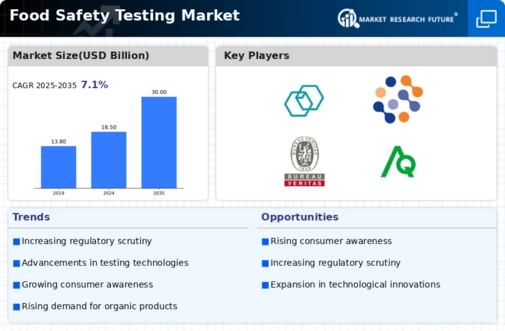
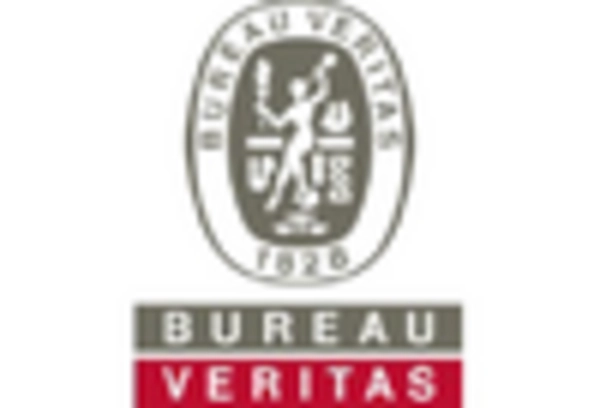
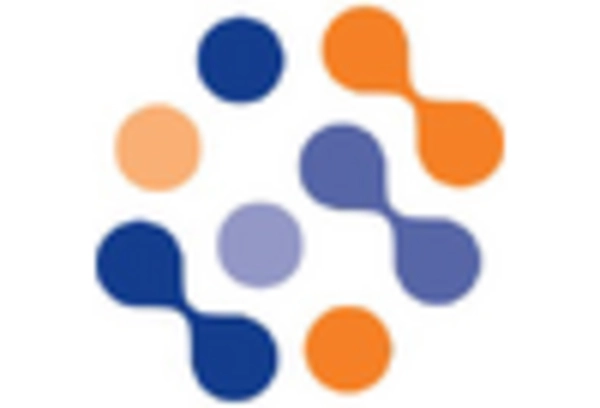
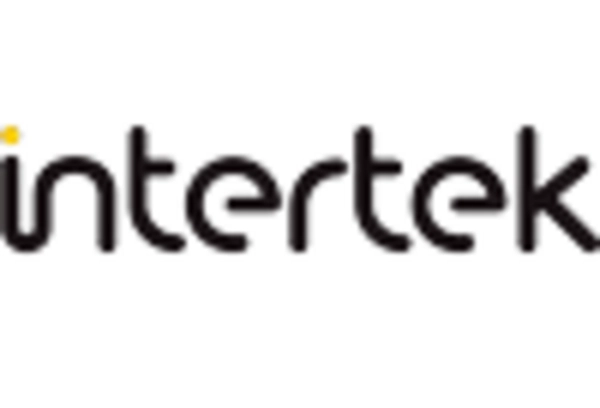
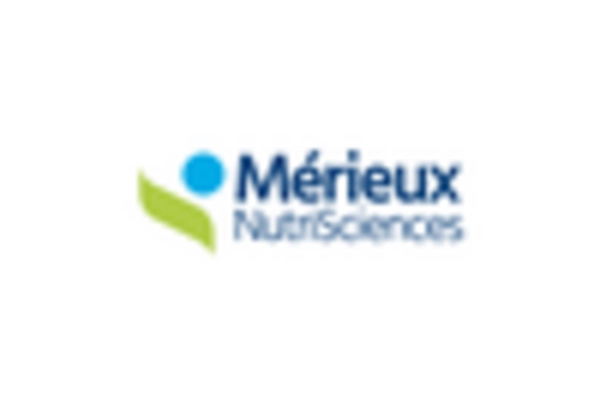
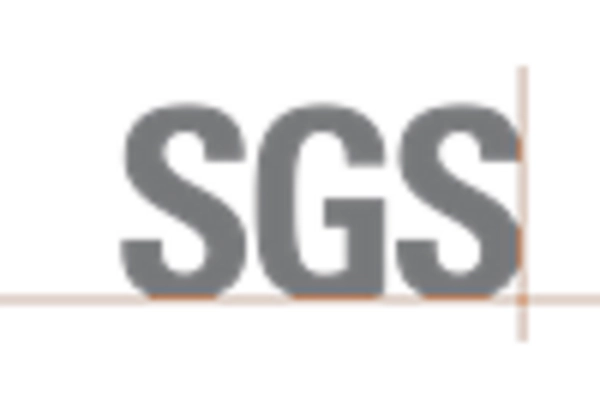
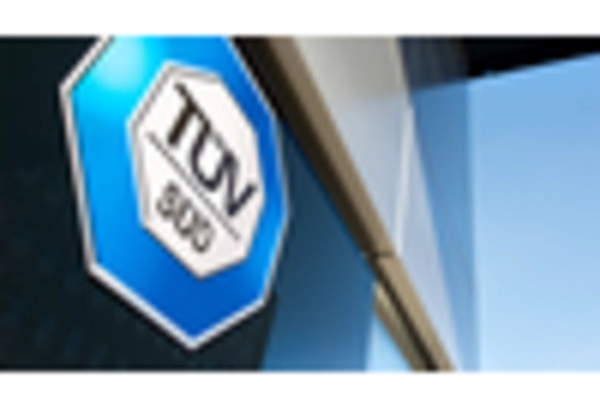









Leave a Comment